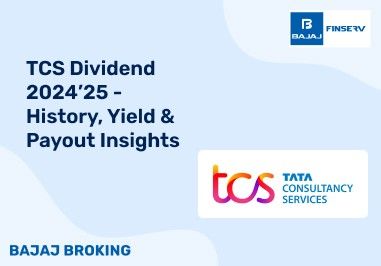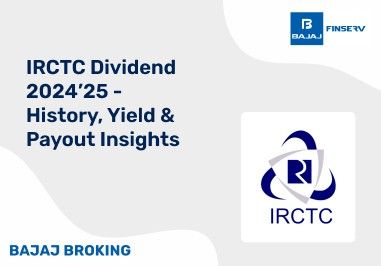The Broadening Top Chart Pattern is a technical analysis pattern that signals heightened market volatility and uncertainty. It is formed when an asset's price movements create a series of highs and lows, resulting in a widening structure. This pattern can indicate a potential trend reversal, making it crucial for traders to recognize and analyze it effectively.
Understanding the Broadening Top Pattern can help traders and investors anticipate price movements, manage risks, and make informed trading decisions. In this article, we will explore its key characteristics, formation process, and trading strategies to help you navigate this complex pattern successfully.
Identifying Characteristics of Broadening Top Patterns
Traders identify the Broadening Top Pattern based on several distinctive features:
Diverging Trendlines – The pattern forms as the price makes successive higher highs and lower lows, causing the trendlines to spread apart.
Expanding Volatility – Price swings become increasingly unpredictable, reflecting market indecision and heightened speculation.
Volume Fluctuations – Volume may rise during breakouts but generally remains inconsistent within the pattern.
Uncertain Direction – The pattern does not immediately indicate a bullish or bearish breakout, making it a neutral formation until confirmed.
Breakout Confirmation – A breakout in either direction (above resistance or below support) signals the next major price movement.
Traders often wait for confirmation before making any trading decisions, as false breakouts can occur within this pattern.
Formation and Structure of the Pattern
The Broadening Top Chart Pattern is formed when price action becomes increasingly unstable, leading to higher highs and lower lows within a diverging price range. This pattern represents a period of extreme market uncertainty, where neither buyers nor sellers maintain control for long, resulting in unpredictable price swings.
Key Stages of Formation
The formation of the Broadening Top Pattern follows a structured process that unfolds over multiple trading sessions:
1. Initial Uptrend
The pattern typically begins with an existing uptrend, where bullish momentum drives prices higher. Traders and investors are optimistic, leading to strong buying interest. The asset steadily moves upward, forming higher highs and higher lows, creating the illusion of a sustained bull run.
2. Market Becomes Volatile
As the price continues to rise, volatility increases. Large investors start taking profits, leading to sharp declines. However, new buyers step in, pushing prices back up. This back-and-forth movement creates wider price swings, reflecting growing market uncertainty.
3. Higher Highs and Lower Lows Appear
Unlike normal consolidation patterns, where price action stabilizes within a narrow range, the Broadening Top Pattern exhibits diverging trendlines:
Buyers push the price to higher highs, showing bursts of optimism.
Sellers respond by driving the price to lower lows, signaling weakness.
As a result, the two trendlines—one connecting the highs and the other connecting the lows—begin to spread apart, creating a broadening shape.
4. Diverging Trendlines Confirm the Pattern
For the pattern to be valid, these trendlines must continue to expand, showing:
Increasingly larger price fluctuations.
Inconsistent volume, with spikes during major moves but lacking sustained strength.
No clear directional bias, as the market swings erratically.
At this stage, traders often remain cautious because the pattern does not immediately confirm whether the breakout will be bullish or bearish.
5. Breakout Decision Point
Eventually, the market reaches a decision point where it breaks out in one direction:
Bearish Breakout (More Common): If sellers gain dominance, the price falls below support, confirming a downward trend. This signals traders to enter short positions.
Bullish Breakout (Less Common): If buying pressure overcomes selling, the price surges above resistance, leading to a continuation of the uptrend.
Volume plays a crucial role in confirming the breakout. A strong volume surge along with the price moving beyond the support or resistance level increases the reliability of the breakout.
Why Does the Broadening Top Pattern Form?
The Broadening Top Chart Pattern is often associated with heightened speculation and uncertainty in the market. Several factors contribute to its formation:
Market Indecision: Investors and traders are unsure about the asset's future, leading to erratic price movements.
Institutional Profit Booking: Large investors may sell their holdings in phases, creating significant downward pressure at intervals.
Retail Trader Optimism: Retail traders continue buying after each dip, assuming the uptrend will resume, pushing prices back up.
Lack of Strong Support and Resistance: Because the price keeps expanding, there are no well-defined support or resistance levels, making it harder for traders to predict reversals.
This combination of factors results in a pattern of expanding volatility, making the Broadening Top Chart Pattern one of the most challenging patterns to trade.
Trading Strategies for Broadening Top Patterns
Successfully trading the Broadening Top Chart Pattern requires careful analysis and risk management. Here are some strategies traders use:
Breakout Trading – Traders wait for the price to break above resistance (bullish) or below support (bearish) before entering a trade. A strong breakout with increased volume provides confirmation.
Short Selling in Bearish Breakouts – If the price breaks below support, traders may enter short positions, expecting a downward move. A stop-loss is placed above the last swing high.
Buying in Bullish Breakouts – If the price breaks above resistance, traders enter long positions, with a stop-loss placed below the last swing low.
Risk Management – Given the pattern’s high volatility, using stop-loss orders is essential to protect against false breakouts and minimize losses.
Combining Indicators – Using Relative Strength Index (RSI), Moving Averages, and Volume Analysis can improve accuracy in identifying genuine breakouts.
Traders should always look for additional confirmation signals before committing to a trade, as false breakouts can lead to significant losses.
Additional Read - Diamond Chart Pattern
Conclusion: Key Takeaways
The Broadening Top Chart Pattern is a powerful tool in technical analysis, often signaling trend reversals due to increasing market volatility. Recognizing this pattern early can help traders prepare for potential breakouts and manage risks effectively.
Key Takeaways:
The pattern consists of higher highs and lower lows, forming diverging trendlines.
It reflects market indecision and heightened volatility.
Traders should wait for a confirmed breakout before entering a trade.
Risk management strategies, such as stop-loss orders and indicator confirmations, are essential for success.
Mastering the Broadening Top Pattern requires patience, careful analysis, and a disciplined approach. By combining it with other technical indicators, traders can improve their decision-making and navigate volatile market conditions effectively.













